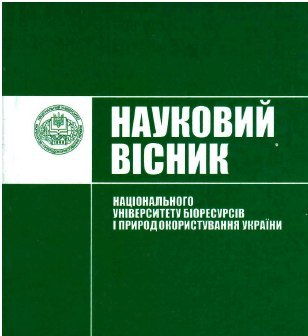Semantic and pragmatic characteristics of English passive constructions
DOI:
https://doi.org/10.31548/philolog0(263).2017.036%20-%2042Abstract
This article informs about typology of English passive constructions compared with Ukrainian ones. Passive constructions are more typical for English than for Ukrainian. Therefore, specific problems arise in translating English passive constructions into Ukrainian. One can find out that this peculiarity proceeds from languages belonging to different groups: analytic (English) and synthetic (Ukrainian). Passive constructions are used in order to emphasize rather an object of the action, than a subject. Ukrainian language also has passive constructions, but they are not widely used in Ukrainian professional texts.
The article also provides the information about types of mistakes that occur in translation, as well as the correct ways of translation. There are five common types of translating English passive constructions into Ukrainian. Translator should be very careful due to a fact that passive constructions are used in the manuals, covering letters and other technical papers. Semantic and pragmatic characteristics of passive constructions with locative preposition and mediopassive constructions have also been considered. Semantic and pragmatic characteristics of mediopasssive constructions as well as those with locative preposition, with a verb being not defined have been considered. The Attributive Infinitive in the function of definition, undergoing neutralization of opposition active/passive and typical English constructions with static and dynamic passive verbal expressions of perfective/imperfective aspect have been analyzed. It has been concluded that passive constructions are applied to reformatting subject-object relations in the sentence, and therefore the division on theme/rheme. Passive constructions with locative preposition a verb phrase indicate a significant property or the change in this property of subject-referent. In other types of passive constructions strong implicit modal component of obligation or possibility of action and component of completeness or incompleteness of action are singled out.
References
Venkel, T. V., Val, O. D. (2003). Vdoskonalyuite vashu rozmovnu anhlijsku [Improve your spoken English]. Ruta, 295.
Hanych, D. I., Olijnyk, I. S. (1985). Slovnyk linhvistychnykh terminiv [Glossary of linguistic terms]. Vyshcha shkola, 360.
Retsker, Y.I. (2001). Teoriia perevoda i perevodcheskaya praktika [Theory of translation and translation practice]. Mezhdunarodnye otnosheniia, 240.
Serbenska, O. A. (1996). Dieslivni konstruktsii v ukrayinskomu naukovo-tekhnichnomu movlenni [Verbal constructions in the Ukrainian scientific and technical speech]. – Problemy ukrainskoi naukovo-tekhnichnoi terminolohii. Tezy dopovidey 4-I Mizhnarodnoi naukovoi konferentsii. –Lvivska politekhnika, 36.
Sydoryk, G. I. (2016). Vstup do perekladoznavstva [Basics of translation theory]. Interservis, 328.
Sydoruk, G. I. (2016). Aspektnyi pereklad ahrarnykh tekstiv [Aspect translation of agrarian texts]. Interservis, 496.
Fyodorov, A. V. (2002). Osnovy obshchei teorii perevoda [Basics of general theory of translation]. Filologiya TRI, 416.
Downloads
Published
Issue
Section
License
Relationship between right holders and users shall be governed by the terms of the license Creative Commons Attribution – non-commercial – Distribution On Same Conditions 4.0 international (CC BY-NC-SA 4.0):https://creativecommons.org/licenses/by-nc-sa/4.0/deed.uk
Authors who publish with this journal agree to the following terms:
- Authors retain copyright and grant the journal right of first publication with the work simultaneously licensed under a Creative Commons Attribution License that allows others to share the work with an acknowledgement of the work's authorship and initial publication in this journal.
- Authors are able to enter into separate, additional contractual arrangements for the non-exclusive distribution of the journal's published version of the work (e.g., post it to an institutional repository or publish it in a book), with an acknowledgement of its initial publication in this journal.
- Authors are permitted and encouraged to post their work online (e.g., in institutional repositories or on their website) prior to and during the submission process, as it can lead to productive exchanges, as well as earlier and greater citation of published work (See The Effect of Open Access).

